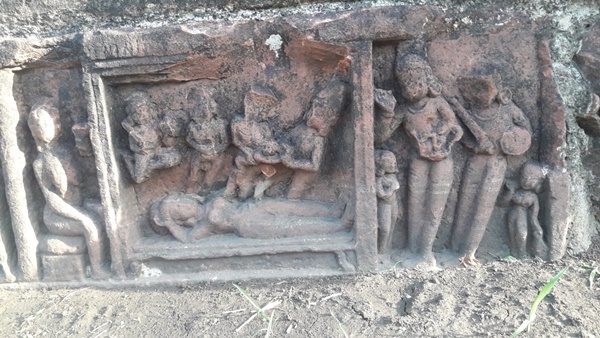The first Krishnilaila was carved on stones 1700 years ago in Aran, Madhya Pradesh. The kings of the Gupta dynasty engraved these stories on the walls of the Mahavishnu temple from craftsmanship. This ancient archaeological evidence shows the popularity of Lord Krishna devotion. Archaeological Survey of India is working on a project to preserve these panels.
The most ancient archaeological evidence of Lord Krishna devotion exists in Aira of Sagar district, about 155 km from Bhopal, the capital of Madhya Pradesh. Here these stories were carved out of craftsmanship on the walls of the Mahavishnu temple built by the kings of the Gupta dynasty. Archaeologists say that these panels found in Aran are the oldest archaeological evidence of the popularity of worship of Lord Krishna.
Archaeological Survey of India (ASI) is working on a project to preserve these panels of Shri Krishna Katha. 75 percent of its work has been completed. In the next three-four months, these panels will be better available to tourists for darshan.
Dr. Mohan Lal Chadhar, President of the Department of Ancient History at Indira Gandhi National Tribal University in Amarkantak, who has written a book book on Airan, said that there was a wide publicity of Bhagwat Dharma during the Gupta period. This religion was so popular that many foreigners also came under its influence. The Greek Ambassador like Holiodorus also came here and accepted the Bhagwat Dharma.
More than 20 episodes involved
Views shown in panels include the birth of Shri Krishna in Mathura jail, Vasudev crossed the Yamuna and transporting him to Gokul, the sankation of Balarama in the womb of Rohini, Pootana slaughter in childhood, Daman of Kalia Nag, lifting Govardhan Parvat, Raslila and Kansa Vadh.
Each scene is extremely subtle on the stone, in which it is clearly visible to the emotional and cloth. Researchers say that this craftsmanship is so amazing that these panels are placed in one order.
It was an important center of the Gupta period
Archaeological Survey of India, Dr. Shivkant Vajpayee, Archaeologist of Jabalpur circle, states that Aran, situated on the banks of the Bina River, was an important business and strategic center. Today it is a village, but in ancient times it was a rich city. Recipients and coins from Samudragupta to subsequent Gupta rulers have been found here.
There was Dashavatar Temple here
Dr. Mohan Lal Chadar explains that the Gupta rulers in Aira built the Dashavatar temple in the fourth-fifth century. This temple later collapsed. In its report of 1873-74, General Cunningham first described this temple. There are only idols of Mahavishnu, Mahavarah and Narasimha. The remaining statues were not found. The base of their temples is still safe, which shows its grandeur. In this temple, there was craftsmanship of God’s Leela.
A big center will be built for devotees
The oldest archaeological evidence of Krishna Katha in India is found in Aran. Their protection work will be completed soon. After that it will become a big center of philosophy for devotees and those interested in history. – Dr. Shivkant Vajpayee, Superintending Archaeologist, ASI, Jabalpur






